Black elite
The Black elite is any elite, either political or economic in nature, that is made up of people of predominantly or significantly Black African descent. In the Western World, it is typically distinct from—but nevertheless often overlaps with—other national elites, such as the United Kingdom's aristocracy and the United States' upper class.
United Kingdom
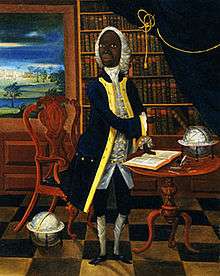
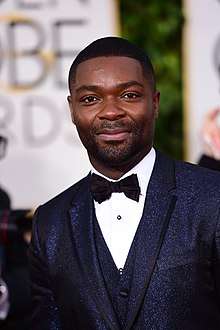
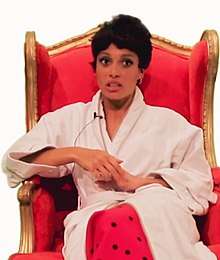
In the United Kingdom, the black community has largely consisted of immigrants whose residency in the country dates from either the time of the old Empire or that of the new Commonwealth. Be that as it may, people of significantly African descent have been a recognizable component of British society since at least the Elizabethan period, if not earlier.
An elite developed within the community over the course of several centuries by way of the assimilation of members of the older black elites of British Africa (such as Sara Forbes Bonetta), the birth of mixed race children of British aristocrats (such as Dido Elizabeth Belle), the rise of several black and mixed race national leaders (such as Paul Boateng), and the entry of large numbers of black and mixed race individuals into specialized industries like the arts (such as Lenny Henry).
Like their counterparts in America and elsewhere, many members of the black elite historically took part in the campaign to abolish slavery in the empire. Some, like Olaudah Equiano, even became politically prominent by way of their efforts.
Following the abolition in the early 1800s, prominent blacks continued to feature in Britain's social life in the following centuries. Mary Seacole was a heroine of the Crimean War, and Learie Constantine was later an important cricketer.
Today, many of Britain's black and mixed race people appear in the annual Powerlist - a ranking of the nation's most prominent people of colour. A number of them - such as Boateng and Henry - are also peers and/or knights of the realm. There is also a small community of British aristocrats that are of black descent. A notable member of this latter sub-group is the mixed race royal Archie Mountbatten-Windsor, who is currently the heir apparent to the noble titles that are held by his father .
United States
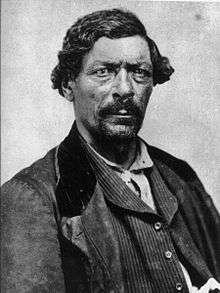
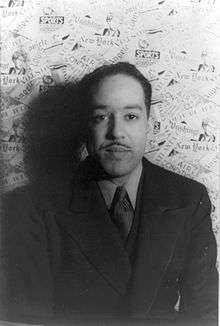
.jpg)
In the North of the United States, many educated blacks—taking advantage of their relative freedom—took part in abolitionist and suffragist activities. Members of what Dr. W.E.B. Du Bois would later call the Talented Tenth, they also provided support to stations of the Underground Railroad prior to the abolition of slavery.
In the South, an elite started forming before the American Civil War among free blacks who managed to acquire property. Of the free people of color in North Carolina in the censuses from 1790 to 1810, 80% can be traced to African Americans free in Virginia during the colonial period. Free blacks migrated from Virginia to other states over several generations, as did many of their neighbors. Extensive research into colonial court records, wills and deeds has demonstrated that most of those free families came from relationships or marriages between white women, servant or free, and black men, servant, free or slave. Such relationships were part of the more fluid relationships among the working class before the boundaries of slavery hardened.[1]
During the 19th century, there were additional relationships between whites and blacks, not always of a consensual nature. What is notorious is that white slaveholders could take advantage of slave women because of their power. There were also slaveholders who had caring relationships, common-law marriages, and even real marriages with black slave women, and who sometimes freed them and their children. Some slaveholders did provide for their mixed-race children by ensuring they got education although, in other cases, they were simply apprenticed to a trade or craft. Whatever property the father passed on to the child was important in helping that person get a start in life. These mulattos in turn patterned their subsequent lives after "polite" white society. In some places, such as New Orleans, this system coalesced into what was known as Plaçage.
In the South, because of their head start in acquiring property, the black elite began to exercise leadership roles within the church, black schools, and community, but as in any society, there were natural leaders who rose up from many different classes.
Catering services and other skilled employment were important because they had the white contacts needed to remain within the “status quo”. The black elite also enjoyed the benefits of living within the white neighborhoods, which further isolated them from the darker-skinned African Americans and which caused many of them to blame them for the downward shifts in life-style choices. Some lighter skinned blacks even passed for white, and were assimilated into white society thereafter.
The Civil Rights Movement and affirmative action brought about many changes for the black elite. As the old elite died away, it made room for the new black elite to emerge. Within its ranks are the educated, the politicians, the entrepreneurs, actors, singers, and those who are otherwise part of America's wider upper-middle class.
Other examples
In addition to those that have already been cited, communities from around the world that either are or once were generally thought to constitute a Black elite include:
- Abirus
- Affranchis
- Afro-Bolivian monarchy
- Aguda people
- Americo-Liberians
- Andriana
- Angolan Mestiços
- Aro Igbos
- Assimilados
- Black Loyalists
- Black Patriots
- Creoles of Color
- Egba Alake Yorubas
- Emancipados
- Ethiopian nobility
- Évolués
- Fernandino peoples
- Freedmen
- Free Negros
- Free people of color
- Ganwas
- Gbara clans of Mali
- Ghanaian chieftaincy
- Gold Coast Euro-Africans
- Kumasi Ashantis
- Maroons
- Masonic Order of Liberia
- Mourides
- Mulatto Haitians
- Nigerian chieftaincy
- Oyo Yorubas
- Pardo Brazilians
- Prazeros
- Quadroons
- Saro people
- Shirazis of the Swahili Coast
- Siddis of Janjira and Jafarabad
- Sierra Leone Creole people
See also
- Aristocracy (class)
- Aristocracy (system)
- Elitism
- Nouveau Riche
- Old Money
- Upper class
References
- Benjamin, Lois; The Black Elite, Nelson-hall Publishers/Chicago, 1991.
- Landry, Bart.; The New Black Middle Class, University of California Press, 1987.
Further reading
- Birmingham, Stephen. Certain People: America's Black Elite, Little Brown & Co., New York, NY, 1977.
- Frazier, E. Franklin. Black Bourgeoisie, Fress Press, New York, NY, 1997.
- Gatewood, Willard B. Aristocrats of Color: The Black Elite, 1880-1920, University of Arkansas Press, Arkansas, 2000.
- Graham, Lawrence. Our Kind of People: Inside America's Black Upper Class, HarperCollins Publishers Inc., New York, NY, 1999.
- Major, Gerri. Black Society, Johnson Publishing Company, Inc., Chicago, 1977.
- Probing the Black Elite’s Role for the 21st Century-Issue 134. Retrieved April 30, 2007.
- The Black Elite in America